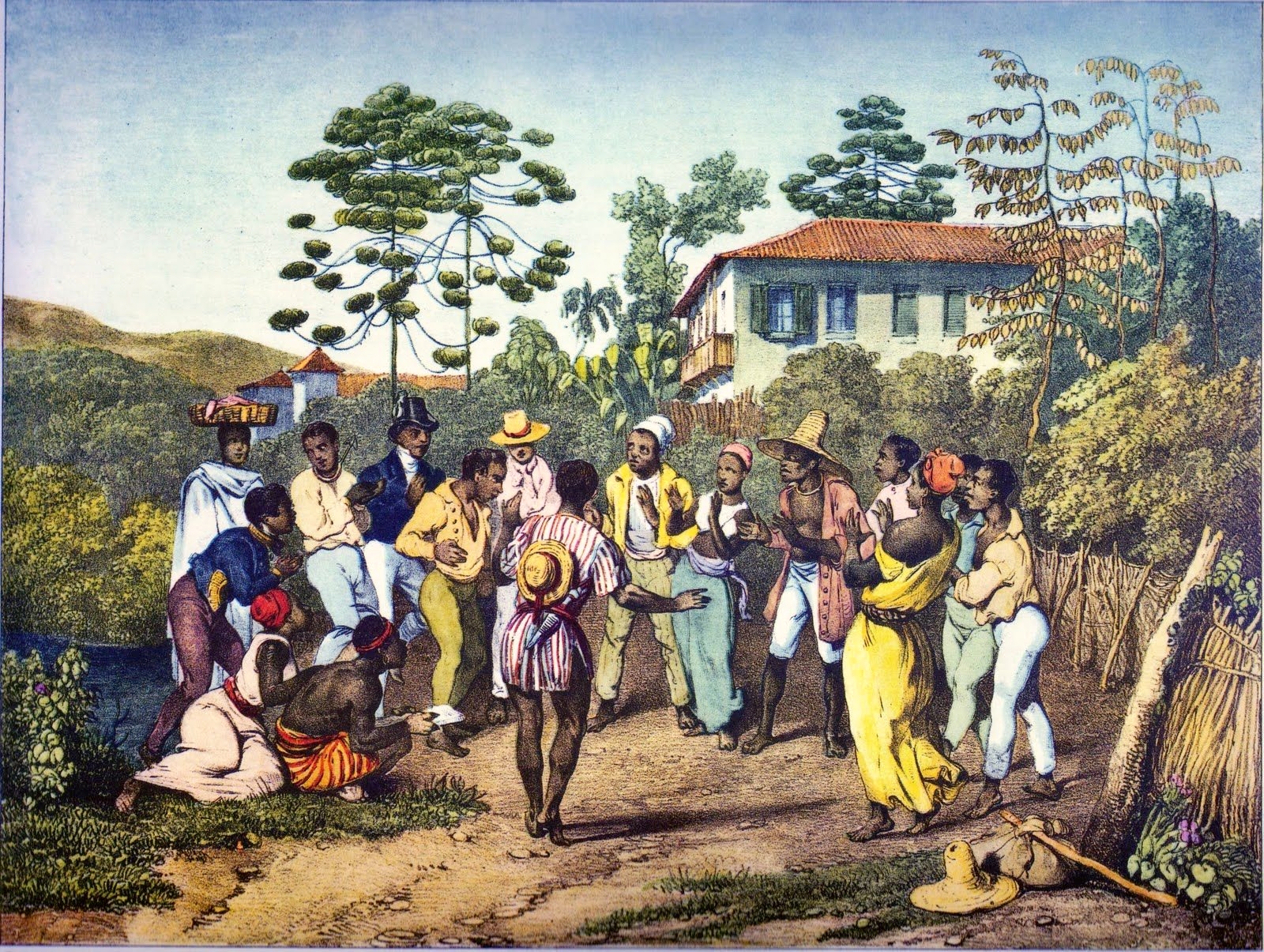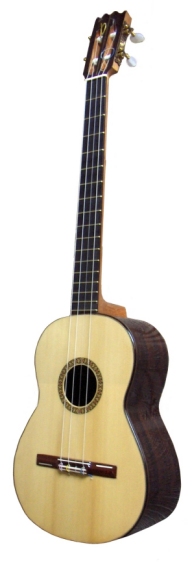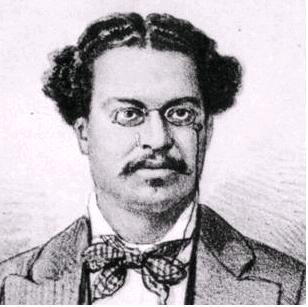|
Nelson Cavaquinho
Nelson Antônio da Silva (October 29, 1911 – February 18, 1986), better known by the stage name Nelson Cavaquinho, was one of the most important singer/composers of samba. He is usually seen as a representative of the tragic aspects of samba thematics, with many songs about death and hopelessness. He was a prominent figure of samba school Estação Primeira de Mangueira. Biography Nelson was born in Rio de Janeiro. Coming from a poor family, he quit school at a young age to seek employment in a factory. He showed a musical talent at a young age playing a home-made guitar made of a cigar box and wires. When he could, he would borrow a cavaquinho and try and copy the techniques of professional cavaquinho players. He demonstrated a great ability to play the instrument and composed a choro ("Caminhando") which gained him notoriety as a musician (due in part to an uncommon modulation Signal modulation is the process of varying one or more properties of a periodic waveform ... [...More Info...] [...Related Items...] OR: [Wikipedia] [Google] [Baidu] |
Samba
Samba () is a broad term for many of the rhythms that compose the better known Brazilian music genres that originated in the Afro-Brazilians, Afro Brazilian communities of Bahia in the late 19th century and early 20th century, It is a name or prefix used for several rhythmic variants, such as samba urbano carioca (''urban Carioca samba''), samba de roda (sometimes also called ''rural samba''), among many other forms of samba, mostly originated in the Rio de Janeiro (state), Rio de Janeiro and Bahia states. Having its roots in Brazilian mythology, Brazilian folk traditions, especially those linked to the primitive rural samba of the Colonial Brazil, colonial and Empire of Brazil, imperial periods, is considered one of the most important cultural phenomena in Brazil and one of the country symbols. Present in the Portuguese language at least since the 19th century, the word "samba" was originally used to designate a "popular dance". Over time, its meaning has been extended to a "B ... [...More Info...] [...Related Items...] OR: [Wikipedia] [Google] [Baidu] |
Rio De Janeiro
Rio de Janeiro, or simply Rio, is the capital of the Rio de Janeiro (state), state of Rio de Janeiro. It is the List of cities in Brazil by population, second-most-populous city in Brazil (after São Paulo) and the Largest cities in the Americas, sixth-most-populous city in the Americas. Founded in 1565 by the Portuguese people, Portuguese, the city was initially the seat of the Captaincy of Rio de Janeiro, a domain of the Portuguese Empire. In 1763, it became the capital of the State of Brazil, a List of states of the Portuguese Empire, state of the Portuguese Empire. In 1808, when the Transfer of the Portuguese Court to Brazil, Portuguese Royal Court moved to Brazil, Rio de Janeiro became the seat of the court of Queen Maria I of Portugal. She subsequently, under the leadership of her son the prince regent John VI of Portugal, raised Brazil to the dignity of a kingdom, within the United Kingdom of Portugal, Brazil and the Algarves, United Kingdom of Portugal, Brazil, and Algar ... [...More Info...] [...Related Items...] OR: [Wikipedia] [Google] [Baidu] |
Cavaquinho
The cavaquinho (pronounced in Portuguese) is a small Portuguese string instrument in the European guitar family, with four wires or gut strings. A cavaquinho player is called a ''cavaquista''. Tuning A common tuning in Portugal is C G A D (non-reentrant with C being the lowest pitch, or from lower to higher pitches). The standard tuning in Brazil is D G B D. Other tunings include: * D A B E – ''Portuguese ancient'' tuning, made popular by Júlio Pereira, reentrant with A being the lowest pitch * G G B D * A A C E * D G B E – used for solo parts in Brazil * G D A E – mandolin tuning * G C E A – ‘''cavacolele''’ tuning, the same as the soprano/tenor ukulele * D G B E – the same as the highest four strings in standard guitar tuning, often used by guitarists, and the same tuning used for the baritone ukulel ... [...More Info...] [...Related Items...] OR: [Wikipedia] [Google] [Baidu] |
Stage Name
A stage name or professional name is a pseudonym used by performers, authors, and entertainers—such as actors, comedians, singers, and musicians. The equivalent concept among writers is called a ''nom de plume'' (pen name). Some performers eventually choose to adopt their stage name as a legal name. Such professional aliases are adopted for a wide variety of reasons and may be similar or nearly identical to an individual's birth name or be inspired by Nickname, nicknames or Maiden Name, maiden names. Some people take a stage name because their birth name is difficult to pronounce or spell; is considered unattractive, dull, or unintentionally amusing; or projects an undesired image. Sometimes a performer adopts a name that is unusual or outlandish to attract attention. Some individuals use a stage name because their birth name is already being used by another notable individual, including names that are not exactly the same but still too similar; many guilds and associations ... [...More Info...] [...Related Items...] OR: [Wikipedia] [Google] [Baidu] |
Cavaquinho
The cavaquinho (pronounced in Portuguese) is a small Portuguese string instrument in the European guitar family, with four wires or gut strings. A cavaquinho player is called a ''cavaquista''. Tuning A common tuning in Portugal is C G A D (non-reentrant with C being the lowest pitch, or from lower to higher pitches). The standard tuning in Brazil is D G B D. Other tunings include: * D A B E – ''Portuguese ancient'' tuning, made popular by Júlio Pereira, reentrant with A being the lowest pitch * G G B D * A A C E * D G B E – used for solo parts in Brazil * G D A E – mandolin tuning * G C E A – ‘''cavacolele''’ tuning, the same as the soprano/tenor ukulele * D G B E – the same as the highest four strings in standard guitar tuning, often used by guitarists, and the same tuning used for the baritone ukulel ... [...More Info...] [...Related Items...] OR: [Wikipedia] [Google] [Baidu] |
Choro
''Choro'' (, "cry" or "lament"), also popularly called ''chorinho'' ("little cry" or "little lament"), is an instrumental Brazilian popular music genre which originated in 19th century Rio de Janeiro. Despite its name, the music often has a fast and happy rhythm. It is characterized by virtuosity, improvisation and subtle modulations, and is full of syncopation and counterpoint. Choro is considered the first characteristically Brazilian genre of urban popular music. The serenaders who play choros are known as ''chorões''. Choro instruments Originally ''choro'' was played by a trio of flute, guitar and cavaquinho (a small chordophone with four strings). Other instruments commonly played in choro are the mandolin, clarinet, saxophone, trumpet and trombone. These melody instruments are backed by a rhythm section composed of 6-string guitar, seven-string guitar (playing bass lines) and light percussion, such as a pandeiro. The cavaquinho appears sometimes as a melody instrume ... [...More Info...] [...Related Items...] OR: [Wikipedia] [Google] [Baidu] |
Modulation (music)
In music, modulation is the change from one tonality ( tonic, or tonal center) to another. This may or may not be accompanied by a change in key signature (a key change). Modulations articulate or create the structure or form of many pieces, as well as add interest. Treatment of a chord as the tonic for less than a phrase is considered tonicization. Requirements *Harmonic: quasi- tonic, modulating dominant, pivot chordForte (1979), p. 267. * Melodic: recognizable segment of the scale of the quasi-tonic or strategically placed leading-tone *Metric and rhythmic: quasi-tonic and modulating dominant on metrically accented beats, prominent pivot chord The quasi-tonic is the tonic of the new key established by the modulation. The modulating dominant is the dominant of the quasi-tonic. The pivot chord is a predominant to the modulating dominant and a chord common to both the keys of the tonic and the quasi-tonic. For example, in a modulation to the dominant, ii/V–V/V–V co ... [...More Info...] [...Related Items...] OR: [Wikipedia] [Google] [Baidu] |
Cartola
Angenor de Oliveira, known as Cartola ( Portuguese for top hat), (; October 11, 1908 – November 30, 1980) was a Brazilian singer, composer and poet considered to be a major figure in the development of samba. Cartola composed, alone or with partners, more than 500 songs. Biography Angenor de Oliveira was born in 1908 in the Catete neighborhood, in the city of Rio de Janeiro. He was the oldest of eight children of the couple Sebastião Joaquim de Oliveira and Aída Gomes de Oliveira. Although he was given the name Agenor, he was registered as Angenor - a fact that he would only discover many years later, when he was preparing the papers for his marriage to Dona Zica in the 1960s. In order not to have to arrange for a name change at the notary, from then on he officially signed his name as Angenor de Oliveira. His maternal family was from Campos dos Goytacazes, and his ancestors were slaves of the first Baron of Carapebus. His maternal grandfather, Luís Cipriano Gomes, a fam ... [...More Info...] [...Related Items...] OR: [Wikipedia] [Google] [Baidu] |
Guilherme De Brito
Guilherme de Brito Bollhorst (January 3, 1922 – April 28, 2006), known as Guilherme de Brito, was a Brazilian '' sambista'', singer, songwriter, and painter. Biography Guilherme de Brito Bollhorst was born in Vila Isabel, a traditional neighborhood with regard to samba, the home of 12 years older Noel Rosa, with whom he was acquainted and who often gave him rides on his car. Brito was the son of Alfredo Nicolau Bollhorst and Marieta de Brito Bollhorst. Guilherme de Brito got a cavaquinho as a present when he was eight; later he became also a '' violonista''. With the death of his father when he was 12, Brito had to drop his studies and start working. He got a job at old Casa Edson, one of the first recording studios to function in Brazil. His aptitude as an artist arose at an early age; when still a boy, he used to draw with pencils and coal. Guilherme de Brito met his most important partner, 11 years older Nelson Cavaquinho, when the latter, already famous and known, used to ... [...More Info...] [...Related Items...] OR: [Wikipedia] [Google] [Baidu] |
1911 Births
Events January * January 1 – A decade after federation, the Northern Territory and the Australian Capital Territory are added to the Commonwealth of Australia. * January 3 ** 1911 Kebin earthquake: An earthquake of 7.7 Moment magnitude scale, moment magnitude strikes near Almaty in Russian Turkestan, killing 450 or more people. ** Siege of Sidney Street in London: Two Latvian people, Latvian anarchists die, after a seven-hour siege against a combined police and military force. Home Secretary Winston Churchill arrives to oversee events. * January 4 – Comparison of the Amundsen and Scott expeditions, Amundsen and Scott expeditions: Robert Falcon Scott's British Terra Nova Expedition, ''Terra Nova'' Expedition to the South Pole arrives in the Antarctic and establishes a base camp at Cape Evans on Ross Island. * January 5 – Egypt's Zamalek SC is founded as a general sports and Association football club by Belgian lawyer George Merzbach as Q ... [...More Info...] [...Related Items...] OR: [Wikipedia] [Google] [Baidu] |






